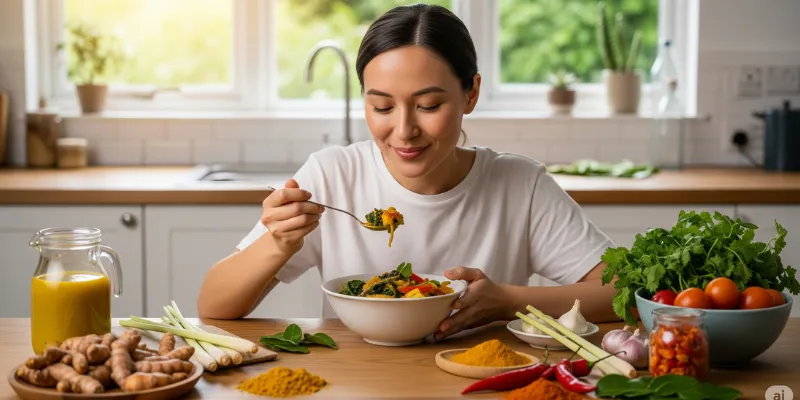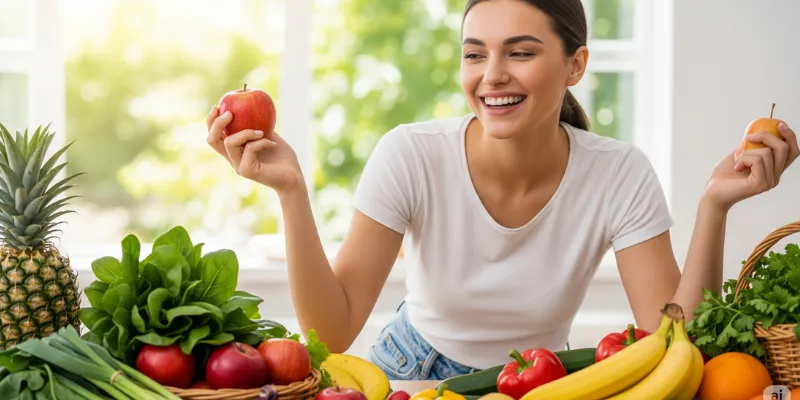Nourish to Flourish: How Vitamins, Minerals, Antioxidants, and Plant-Based Foods Boost Skin Health

The skin is the body’s largest organ by surface area and weight. It accounts for approximately 15% to 16% of total body weight, and one of its most vital for both health and appearance. Beyond its role in aesthetics, skin serves as the first line of defense against environmental threats, pathogens, and physical injury.
It acts as a protective barrier, senses, regulates body temperature and helps manage moisture loss. However, the skin not only shields from harm, but also mirrors internal health. Clear, glowing skin enhances self-confidence and is often viewed as a sign of youth, vitality, and health.
Let’s explore the ways essential nutrients contribute to radiant, healthy skin.
Vitamin A is crucial for maintaining the integrity of the skin barrier. It encourages skin cell turnover, helps prevent clogged pores, and promotes even skin tone. Without enough Vitamin A, skin can become dry, rough, and prone to acne or infections. Collagen is the structural framework that gives skin its firmness and elasticity.
Vitamin C is a co-factor in collagen production, essential for skin strength and youthfulness. It also combats free radical damage from sunlight and pollution, brightens the skin, and reduces dark spots.
Vitamin E is a powerful antioxidant that works alongside Vitamin C to protect the skin from oxidative damage. It helps lock in moisture, reduces inflammation, and supports the skin’s healing process. It’s especially useful in preventing premature aging caused by environmental stressors.
Zinc is a trace mineral with major skin benefits. It plays a key role in wound healing, controlling oil production, and reducing acne-causing bacteria. Zinc also has anti-inflammatory effects, which can calm irritated or sensitive skin.
Antioxidants are compounds that neutralize free radicals—unstable molecules that damage skin cells and accelerate aging. A diet rich in antioxidants helps prevent wrinkles, pigmentation, and loss of elasticity. The more colorful your plate, the better the protection.
Omega-3 and Omega-6 fatty acids are essential for maintaining the skin’s lipid barrier, which keeps moisture in and irritants out. These healthy fats soothe inflammation, improve skin texture, and help prevent conditions like eczema and acne.
A plant-based diet is naturally rich in water, fiber, vitamins, and antioxidants that support detoxification and circulation—two key processes for glowing skin. It also helps reduce inflammation, which is often at the root of common skin conditions.

Skin Benefits of Going Plant-Based:
- Improved hydration and elasticity
- Fewer breakouts and irritations
- Slower signs of aging
- Enhanced nutrient delivery to skin cells
Below are some recipes that you can explore:
Malaysian Vegetable Curry (Kari Sayur)
A warm, comforting curry with traditional Malaysian flavors, loaded with colorful vegetables, legumes, and healthy fats - perfect for glowing skin.
Ingredients (Serves 3–4):
Curry Base:
- 1 tbsp coconut oil (healthy fats for skin moisture)
- 1 red onion, sliced (antioxidants)
- 3 cloves garlic, minced (antioxidants, anti-inflammatory)
- 1 inch ginger, minced (antioxidant, boosts circulation)
- 1 stalk lemongrass, bruised (aromatic + antioxidant)
- 2 tsp curry powder (turmeric content = anti-inflammatory)
- 1 tsp ground coriander
Vegetables & Legumes (for vitamins & minerals):
- 1 cup sweet potato, cubed (Vitamin A)
- 1/2 cup carrots, sliced (Vitamin A)
- 1 cup pumpkin or butternut squash (Vitamin A)
- 1 cup long beans or green beans (Vitamin C)
- 1/2 cup red bell pepper, sliced (Vitamin C, antioxidants)
- 1 cup chickpeas or tempeh cubes (Zinc, protein)
- 2 cups spinach or sawi (Vitamin A, C, E)
Liquid:
- 1 cup light coconut milk (hydration, healthy fats)
- 1/2 cup water or vegetable broth
- Salt to taste
- Juice of 1 lime or calamansi (Vitamin C boost)
Garnishes (optional):
- Fresh coriander or daun sup (antioxidant)
- Chia seeds or ground flaxseed (Omega-3s)
- Toasted pumpkin or sunflower seeds (Zinc, Vitamin E)
Preparations:
- Prepare the Curry Base:
Heat the coconut oil in a pot. Sauté onion, garlic, and ginger until fragrant. Add bruised lemongrass.
- Spice It Up:
Stir in curry powder and coriander. Cook until aromatic (1–2 mins).
- Add Root Veggies:
Add sweet potato, carrots, and pumpkin. Stir well to coat with spices.
- Simmer:
Pour in coconut milk and water. Bring to a gentle boil. Simmer for 10–15 minutes, until the vegetables soften.
- Add Quick-Cook Veggies:
Add chickpeas or tempeh, red pepper, and long beans. Simmer another 5–7 minutes.
- Finish with Greens:
Stir in spinach or sawi until just wilted. Adjust salt and squeeze in fresh lime juice.
- Serve Warm:
Ladle curry into bowls. Garnish with chia seeds, seeds, and coriander
- Pairing suggestion:
Serve with brown rice or quinoa (extra zinc and fiber!)



















